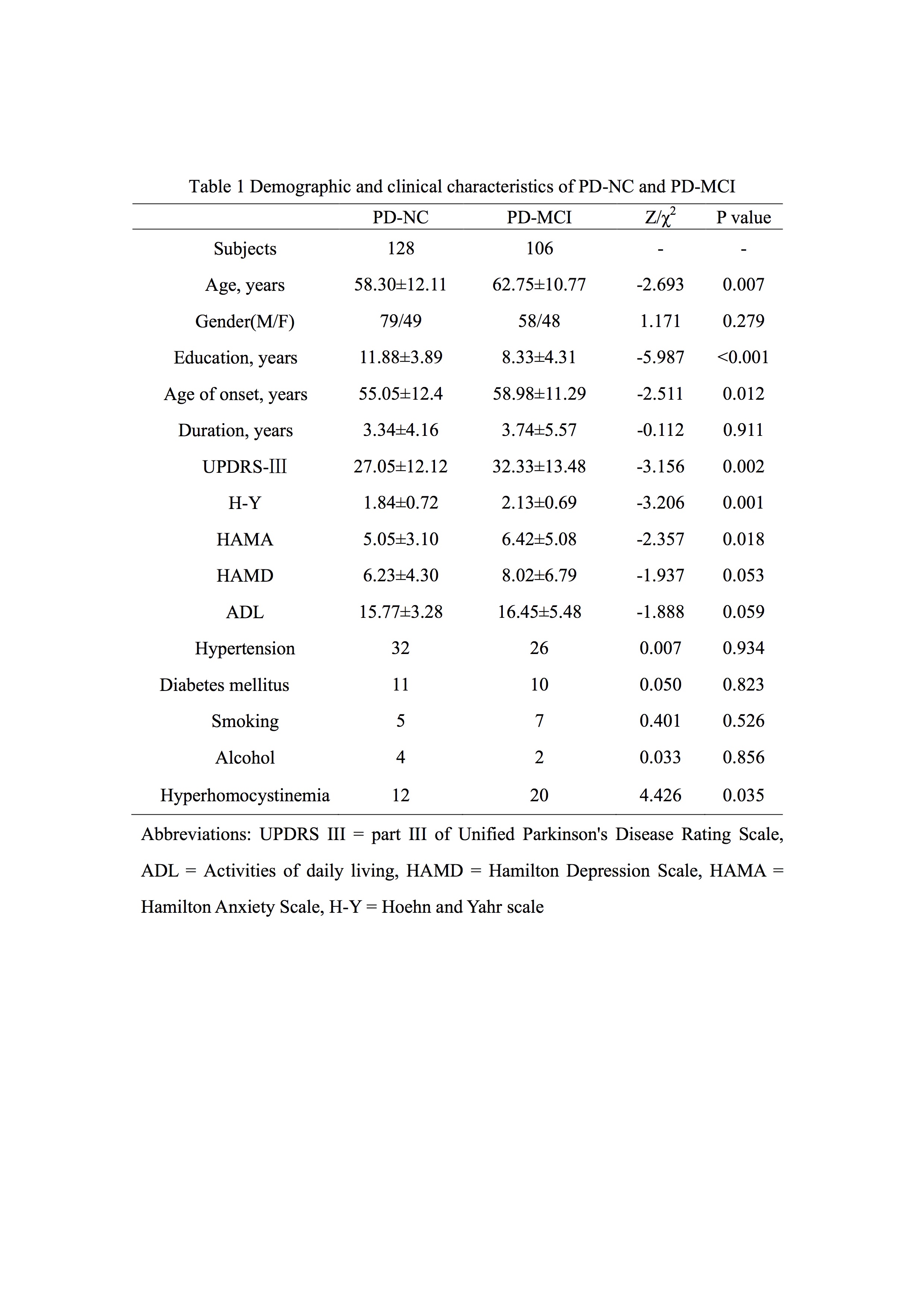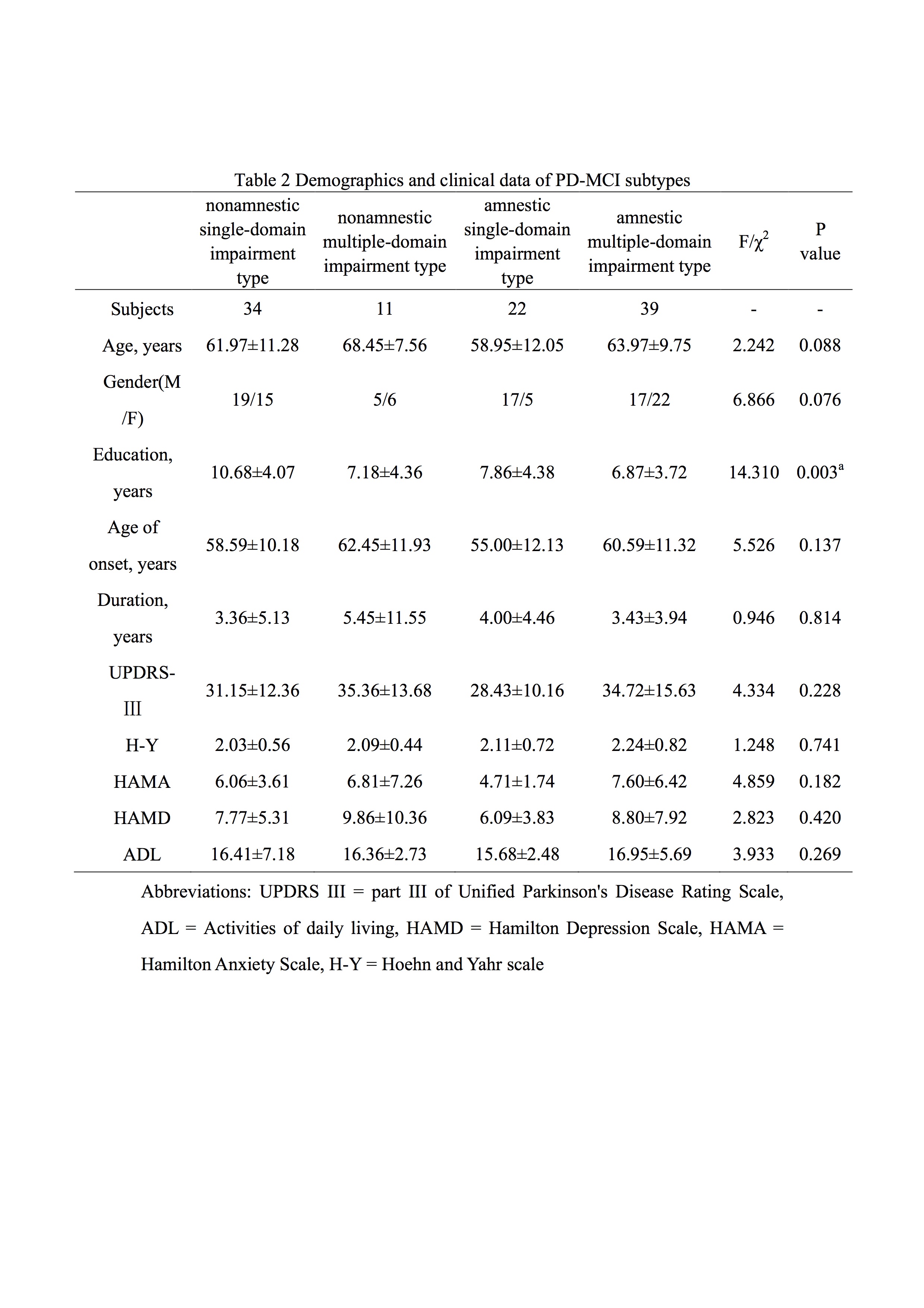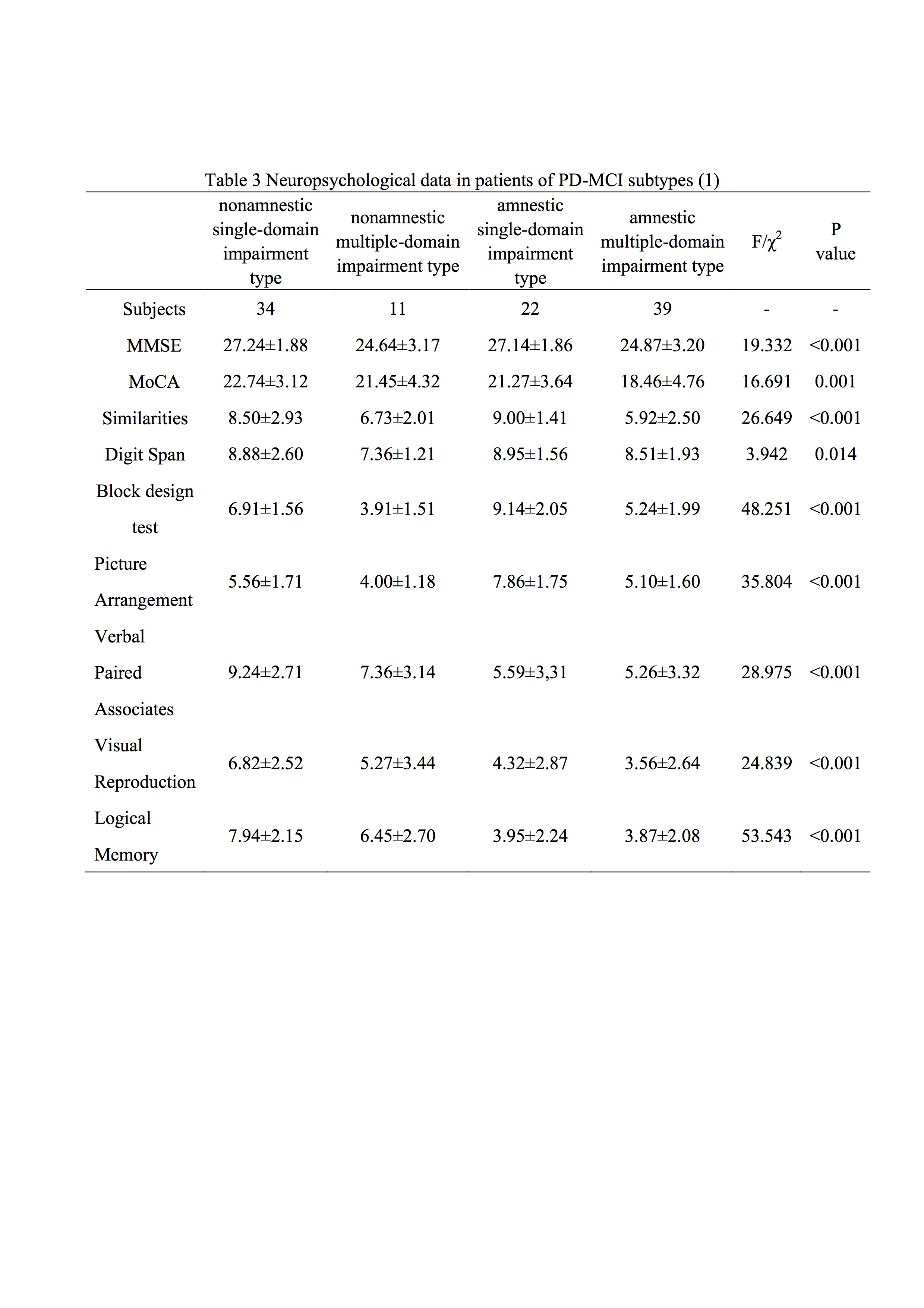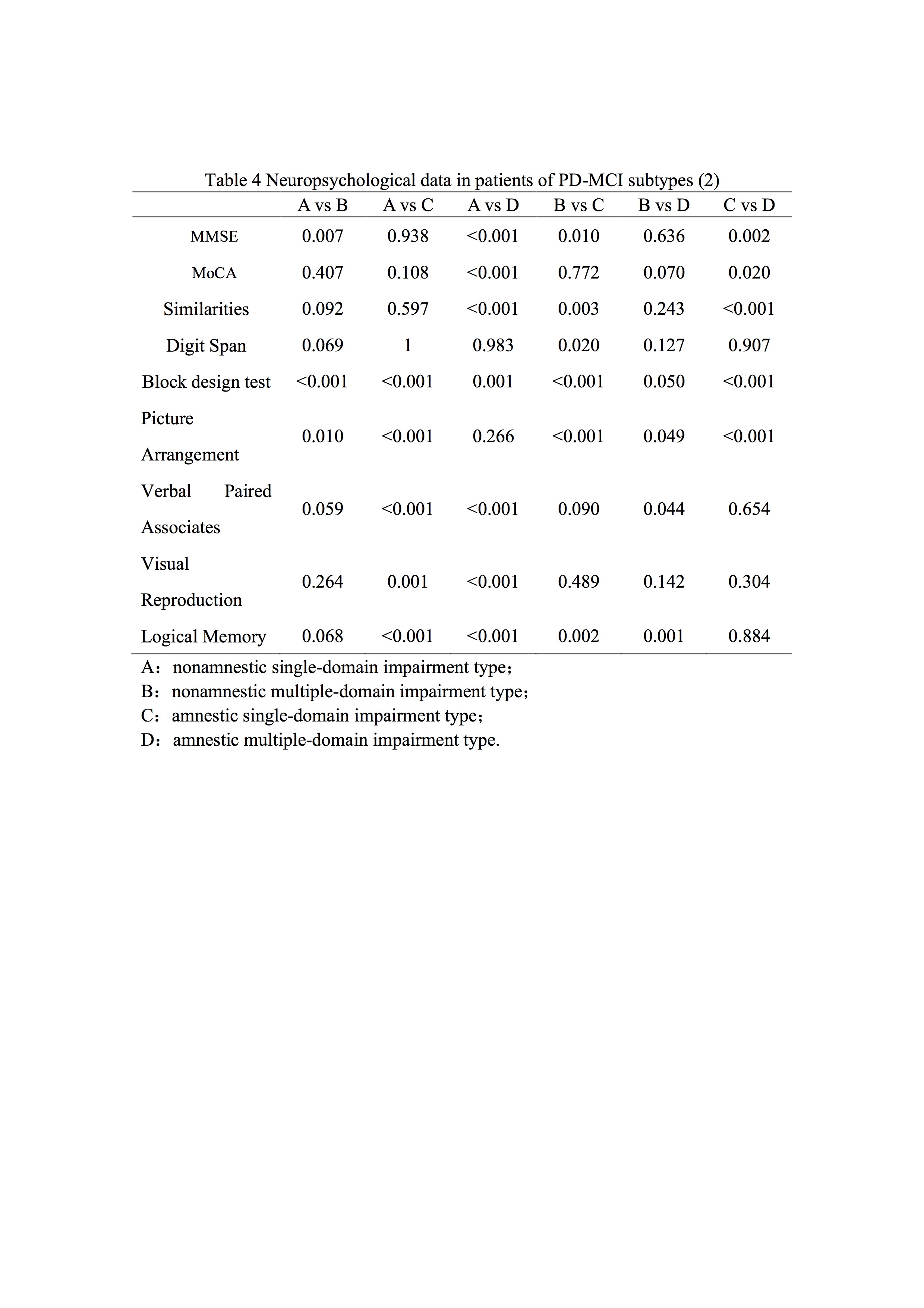Session Information
Date: Monday, October 8, 2018
Session Title: Parkinson's Disease: Cognition
Session Time: 1:15pm-2:45pm
Location: Hall 3FG
Objective: To investigate the clinical characteristics, cognitive impairment features, and subgroup types of Parkinson’s disease (PD) patients with mild cognitive impairment and to analyze relevant risk factors of mild cognitive impairment in PD.
Background: Epidemiological studies have shown that the prevalence of PD-MCI is 27% (18.9%-38.2%) [1].Different types of MCI may constitute the prodromal period of different types of dementia [2]. There are few studies on the risk factors of PD-MCI.
Methods: A total of 234 cases of non-dementia PD patients were collected. Their relevant clinical data were collected to evaluate motor function, cognitive function, anxiety, depression, and daily living ability. Non-dementia PD patients were divided into Parkinson’s disease with normal cognition (PD-NC) and PD-MCI groups based on the PD-MCI diagnostic criteria. PD-MCI patients were further divided into four subtypes, and characteristics of all subtypes were analyzed. Binary logistic regression analyses were performed to analyze PD-MCI-related risk factors.
Results: (1) Among 234 cases of non-dementia PD patients, there were 106 cases of PD-MCI patients, accounting for 45.3%. Compared with the PD-NC group, age, age of disease onset, years of education, and motor symptom severity between these two groups had significant differences (P<0.05) (Table 1). (2) Subgroup analyses of PD-MCI showed that PD-MCI patients mainly had single-domain cognitive impairment (Table 2, 3 and 4). (3) The education level might be associated with memory impairment (Table 5). (4) Regression analysis results showed that old age, high UPDRS-III score, and hyperhomocysteinemia were risk factors for the development of PD-MCI, whereas a high education level was a protective factor (Table 5).
Conclusions: PD-MCI patients showed that mild cognitive impairment was extensively present in the non-dementia PD population. A high education level was a protective factor of PD-MCI, while old age, severe motor symptoms, and homocysteinemia as a vascular risk factor might promote the development of PD-MCI.
References: [1] I. Litvan, D. Aarsland, C.H. Adler, J.G. Goldman, J. Kulisevsky, B. Mollenhauer, M.C. Rodriguez-Oroz, A.I. Troster, D. Weintraub, MDS Task Force on mild cognitive impairment in Parkinson’s disease: critical review of PD-MCI, Mov Disord 26 (2011) 1814-1824. [2] R.C. Petersen, G.E. Smith, S.C. Waring, R.J. Ivnik, E.G. Tangalos, E. Kokmen, Mild cognitive impairment: clinical characterization and outcome, Arch Neurol 56 (1999) 303-308.
To cite this abstract in AMA style:
K. Nie, Y. Gao, M. Mei, M. Guo, Z. Huang, L. Wang, J. Zhao, Y. Zhang, L. Wang. The clinical characteristics and cognitive features of mild cognitive impairment in Parkinson’s disease and analysis of relevant factors [abstract]. Mov Disord. 2018; 33 (suppl 2). https://www.mdsabstracts.org/abstract/the-clinical-characteristics-and-cognitive-features-of-mild-cognitive-impairment-in-parkinsons-disease-and-analysis-of-relevant-factors/. Accessed April 20, 2025.« Back to 2018 International Congress
MDS Abstracts - https://www.mdsabstracts.org/abstract/the-clinical-characteristics-and-cognitive-features-of-mild-cognitive-impairment-in-parkinsons-disease-and-analysis-of-relevant-factors/





